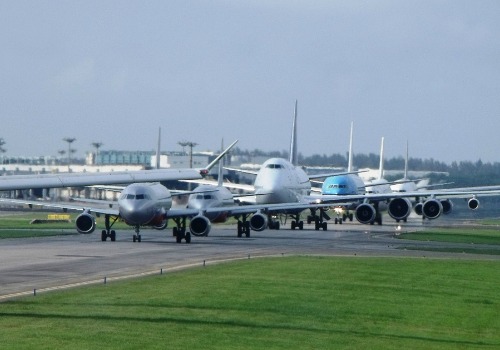
White House / Maison Blanche (Pete Souza)President Obama playing basketball in Camp David.
Last March, I found myself talking to David Rothkopf, an international energy consultant and writer who was a bigwig in the Clinton White House. I was describing President Obama’s strategy for reviving American cities: Hamstrung by Tea Partiers in the House of Representatives, the Obama administration had set up what amounted to a set of demonstration projects designed to prove that smart policies on inner-city schools, transportation, and urban development could get dramatic results — and save taxpayer money at the same time.
There was the Promise Neighborhoods program, which created “children’s zones” to give kids in some of the nation’s hardest-hit urban communities a fighting chance. The Department of Transportation’s TIGER grants funded innovative “multimodal” transportation projects (read: bike and pedestrian paths, streetcars, rail, etc.). The Partnership for Sustainable Communities brought together officials from federal environment, housing, and transportation agencies to support local smart growth initiatives.
Wise moves, I figured: If the GOP doesn’t let you play the game, at least practice your shots and show the coach (in this case, the American public) that you’ve got what it takes, so you’re ready to jump in if and when the opportunity arises.
“There’s another word for that,” Rothkopf said: “Bullshit.”
Were Obama’s first-term policy efforts savvy political maneuvers or empty gestures? The next two years will tell. The president still faces an obstructionist House, but the Nov. 6 elections took a little of the steam out of that teapot, and Obama’s clean sweep of the “swing states” has given him back a little of his swagger. The first two years of a second term are a president’s best chance to make bold moves and leave a lasting legacy. And a host of other forces are combining to make this a historic opportunity to reverse decades of public policy that has subsidized the suburbs at the expense of urban centers.
And there’s this: If Obama misses this chance, it could be a generation before we get another one.
Scant as they were, the programs Obama put in motion during his first term were hard-fought. “They had to go through heroic efforts even to create these pilot programs,” says Ilana Preuss, chief of staff at the nonprofit Smart Growth America and a former staffer in the EPA’s smart growth division.
Tea Party Republicans, some of them convinced that the whole notion of sustainable development is a sinister United Nations plot, stripped all funding from the Sustainable Communities Initiative at the department of Housing and Urban Development (HUD). (The partnership continues to meet, and the administration managed to keep the program staff in place, but HUD lost its funding for community planning grants.) TIGER grants, seen by some right-wingers as part of the bogus “war on the suburbs,” have been slashed each year, and House Republicans would like to see them eliminated completely in 2013. And while Obama talked about pouring billions into Promise Neighborhoods, the program fizzled to just a handful of demonstration projects as the administration struggled to pull the country out of the Great Recession.
Nonetheless, says Preuss, the efforts that did get off the ground are showing strong results. In Pittsburgh, a TIGER grant and Sustainable Communities funding are transforming an industrial waterfront into a “green boulevard,” including parks and wildlife habitat. The moribund city of Columbia, Tenn., is turning its auto-centric main drag into a walkable, tree-lined central business district thanks to a combination of federal and local dollars. Meanwhile, there seems to be a veritable streetcar renaissance underway across the country, thanks in no small part to federal transit funding.
Many of the administration’s initiatives were set up as competitions, so while only a handful of projects received federal funding, communities across the country made bids, and in the process, changed the way they thought about growth and development, poverty, education, and environmental protection.
Preuss is hopeful that the continuing economic hard times will provide more incentive to pursue smart growth policies: High-density urban development costs less over the long haul than car-centric suburban sprawl. “There’s a huge trend at the local level,” she says. “Mayors across every party line are turning to smart growth because it addresses fiscal responsibility.”
The president will have a big opportunity to add more federal muscle to these local efforts in about a year, when talks begin about the next transportation bill. (Congress fell on its face during its last attempt at passing a bill, and critics cited Obama’s lack of strong leadership as a contributing factor.) Rest assured that he’ll meet resistance from Republicans, however.
But austerity isn’t the only factor driving policymakers and community leaders away from car-centric suburban development: Both young people and retiring baby boomers say they want to ditch their cars and lawns and live in cities again. Younger folks especially seem content to trade the “freedom of the road” for a bike and a cheap bus pass. And more people are putting off getting married and having kids — two of the big factors that have typically pulled people out of cities and into the suburbs.
The election results indicate that Americans are ready for some real change, too: Voters approved millions of dollars in public funding for transit. Meanwhile, both Washington and Colorado passed ballot initiatives legalizing marijuana — and not just because people want to get high. Supporters made the case that overzealous drug laws were leading to unjust (and expensive) mass incarceration, particularly of urban blacks.
The right incentives now could catalyze a major suburb-to-city migration in the coming decade — but the opportunity may be short-lived. Young people and boomers say they want to live in the city, but the actual data doesn’t show any overwhelming trend in this direction. And with the economy on a slow rebound (and marriage laws loosening), who’s to say that millennials won’t soon decide to get hitched and start breeding? Once there are rug rats running around the apartment, it’s only a matter of time before a bigger house and a yard in the ’burbs start to have some appeal.
In other words, this window may not remain open for long. Either we jump through or we miss it and doom ourselves to another generation of unsustainable suburban living.
Progress won’t come without some real leadership from the White House, however. President Obama understands these issues well, and one would think that if there’s anyplace he’d like to leave a lasting legacy, it is in the cities where he says he got his real education — where he “became a man.” But we’ve seen the hysteria that arises at the very mention of tweaking the policies that have fueled decades of suburban growth. If President Obama is serious about turning this country’s cities around, he’s going to have to throw down, speak loudly, and not be afraid to get aggressively in the game.



